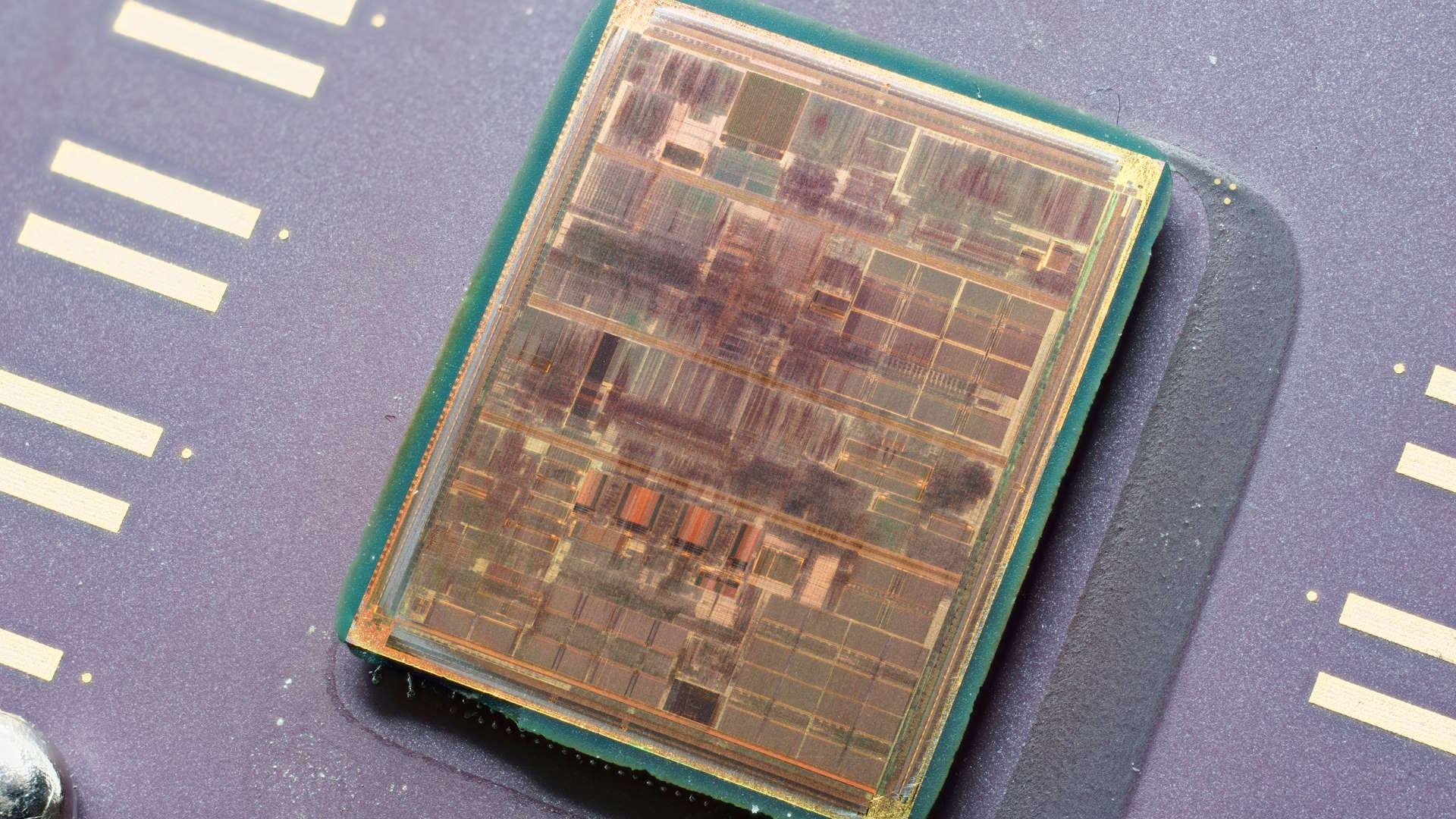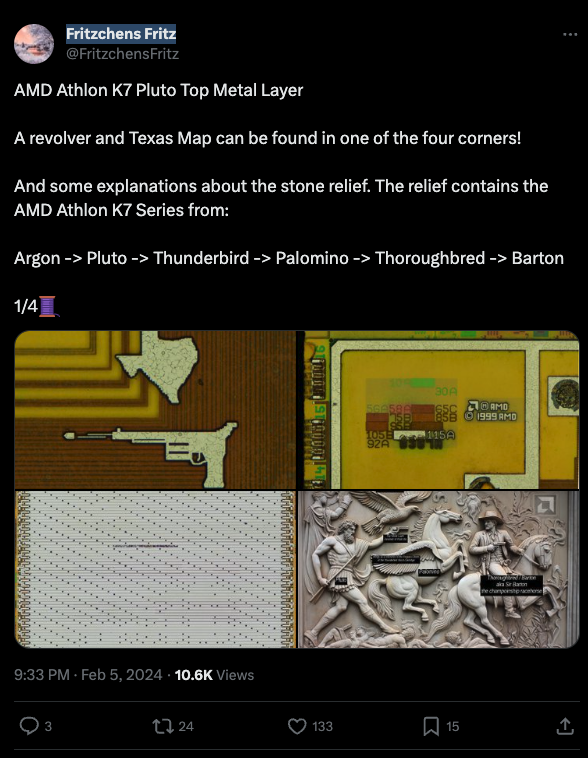
When AMD's Athlon K7 CPU was launched way back in 1999, it turned out to be something of an Intel-killer, smashing the heavyweight's Pentium III CPU. Now it turns out those K7 chips were actual gun slingers, at least insofar as they had bullet-blasting guns etched right into their silicon dies.
That's the discovery made by X poster Fritzchens Fritz, who has something of a sideline in gorgeous photography of CPU and GPU dies. If you zoom into one corner of the top metal layer you can apparently see a revolver firing a bullet, right next to a map of Texas.
The Texas bit may well be a reference to AMD's facilities in Austin Texas. The gun and speeding bullet? Well, that's anyone's guess.
Whatever, it was the Athlon K7 that arguably first shot AMD onto an equal footing with Intel for performance. Not only did it launch with the same 600MHz peak clockspeeds as the Pentium III of the day, it actually offered superior performance in some benchmarks. And that's including the applications that majored on floating point performance, which were previously the preserve of Intel's finest CPUs.
As it happens, it's not a huge surprise to learn that none other than Jim Keller, widely regarded as one of the leading chip architects of recent decades and the man behind AMD's current series of Zen CPU architectures, had a hand in K7's design. Anyway, long story short, K7 proved to be faster than Pentium III in Quake III, and that's really all that matters, right?

For fun, you can check out the Quake III benchmark numbers in Anandtech's original review with the Athlon K7 clocking up just under 120fps while the Pentium III lumbers along below 100fps. Ouch!
Just to provide some context and an idea of how far we've come since the K7, it was built on a 0.25 micron process, which essentially means 250nm, and contained 22 million transistors.

Best CPU for gaming: The top chips from Intel and AMD.
Best gaming motherboard: The right boards.
Best graphics card: Your perfect pixel-pusher awaits.
Best SSD for gaming: Get into the game ahead of the rest.
The latter was actually the highest to date at the time, further underlining that K7 wasn't just there to snag some low-end budget PC sales but was intended to make AMD a real contender for premium performance for the first time.
Today, AMD produces CPUs on 5nm and 4nm TSMC nodes and its Phoenix APU contains 25 billion transistors. AMD also overtook Intel when it comes to market cap, or the overall value of a company according to its share price, in June 2022.
Today, AMD is worth about $270 billion to Intel's $180 billion, an eventuality that would have been very, very hard to believe back in 1999, especially when you consider that Intel had a similar market cap in 1999 to that which is has today but AMD was only worth a couple of billion.







